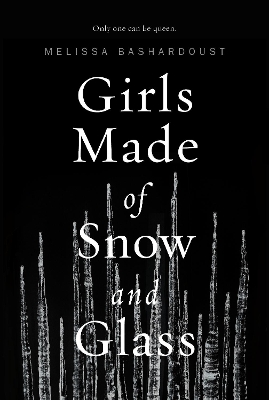Reviewed by Amber (The Literary Phoenix) on
I appreciated it, but I didn’t always enjoy it. And that’s an awkward place for me to live when it comes to reviewing books, because I try really hard not to let my personal enjoyment shade my review. The star ratings I give books are breakdowns of various categories, and “personal enjoyment” is only one category for this precise reason – I can appreciate that a book is incredibly well-constructed, clever, and creative… while not being enamored by it.
When it comes to fairytale retellings – particularly popular ones like Snow White, it’s easy to fall back on time-used tropes. One of the things Melissa Bashardoust did extraordinarily well is take this story and make it her own. We still have a lot of the key figures: a daughter, a step-mother, the huntsman. We have many of the key events: the father’s death, the sleeping curse, and the queen’s penchant for fruit for examples. Even though Bashardoust included these things, it feels like it’s more referential – the story is more than just the elements of the original fairytale. In many ways, she took the elements more literally. I don’t want to spoil the bits and pieces, but if you’re looking at this book purely from a retelling POV… this is one of the most successful retellings I’ve ever read.
Each of the characters has their own wants and needs, and the villain is positively slimy. You know those books where you can side with the villain, even when you know they’re evil (or at least highly complicated)? Gregory is not like that at all. You can see his motivations, and how they make sense to him, but you can not sympathise with him in the least. YA is filled with sympathetic villains, and the ones that are garishly black-and-white. There’s a lot to be said with a rounded villain who you still can’t like.
I also appreciated that Bashardoust rebuilt the step-daughter/step-mother relationship. Snow White and Cinderella have built a very negative stereotype around step-parents that still permeates, and it’s good to see a retelling of one of these create an emotional, complicated relationship instead. Mina, herself, is a wonder. I found Lynette fairly uninteresting, but the Queen was complicated and wonderful.
I said at the beginning of this review that I appreciate Girls Made of Snow and Glass, but didn’t love it. The reason for this lies in the pacing – which dragged a little at times, mostly in the beginning – and personal taste. Girls Made of Snow and Glass is emotionally-driven and has a lot of tragic, dramatic descriptions and it’s well done. Genuinely and truly. But these things just aren’t my favorite, and I really need to be in the perfect mood for them. I found myself impatient with certain gestures or arcs, all things that would not bother many other people. It’s a bit heavier than what I like to read, and heavier than most retellings in general. There’s absolutely nothing wrong with this. It’s just taste.
For those who enjoy retellings and would like something fresh and deeply creative and well-written, I wholeheartedly recommend Girls Made of Snow and Glass. I’m glad I read it, and I’m glad I know what all the hype is about. I’d certainly pick up another book by Melissa Bashardoust. Fans of The Wrath and the Dawn will enjoy this one, as well as the collected community of retelling appreciators.
Reading updates
- Started reading
- 2 March, 2020: Finished reading
- 2 March, 2020: Reviewed
